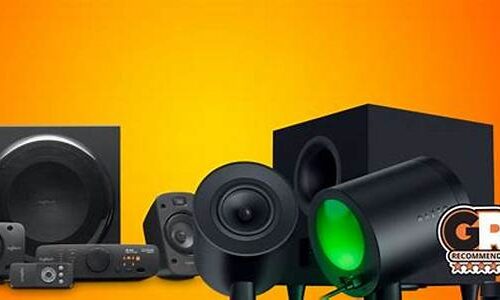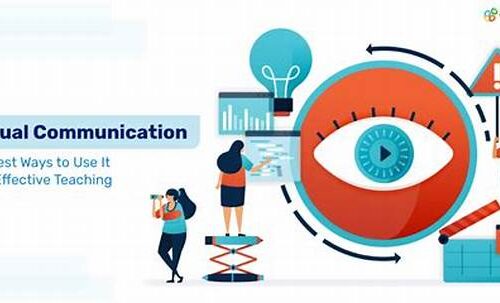Virtual environments have transformed the way we interact with digital media, allowing users to immerse themselves in experiences that were once beyond imagination. A crucial aspect of these virtual worlds is the accurate positioning of sound, which is essential for creating an immersive and believable experience. Sound localization, the process of identifying the origin of a sound in three-dimensional space, plays a pivotal role in crafting virtual environments that truly resonate with users. This capability enhances not only gaming and entertainment but also simulations, virtual reality (VR) training, and telepresence, ensuring users feel as if they are genuinely part of the environment.
Read Now : Ergonomic Chairs For Long Gaming Sessions
The Importance of Sound Localization in Virtual Environments
Sound localization in virtual environments is integral for enhancing user experience and creating realism. Imagine exploring a lush jungle in a VR setting. The rustling of leaves, the distant call of a bird, or the roar of a waterfall must all be accurately placed in space. The right placement ensures users can intuitively respond to auditory cues, enriching their experience. Without precise sound localization, users might feel disoriented or find the experience lacking authenticity, which could detract from their overall engagement. Furthermore, in environments where sound indicates threats or directs actions, such as in military or emergency training simulations, accurate sound localization is crucial for ensuring safety and effectiveness. The blending of audio and visual cues helps train users to respond appropriately, making the experience not only more realistic but also functional. As technology progresses, sound localization in virtual environments continues to evolve, striving for ever-increasing precision and authenticity. Developers are focusing on sophisticated algorithms and sound technologies to simulate real-world acoustic phenomena. The convergence of auditory and visual seamlessness ensures that virtual experiences captivate and engage users at an unprecedented level.
Techniques for Effective Sound Localization
1. HRTF (Head-Related Transfer Function): By utilizing individual physiological data, HRTFs enable personalized sound localization in virtual environments, enhancing realism by tailoring audio experiences to each user.
2. Binaural Recording: This method captures sound using two microphones, emulating natural human hearing and providing a realistic sense of direction for sound localization in virtual environments.
3. Real-Time Processing: Advanced algorithms allow dynamic adjustment of audio cues, reflecting users’ movements, therefore improving sound localization in virtual environments.
4. 3D Audio Technology: Leveraging 3D audio provides spatial awareness in virtual settings, enhancing the perception of distance and direction for sound localization in virtual environments.
5. Wave Field Synthesis: This technique uses an array of speakers to create a sound field that accurately replicates the acoustic conditions of a space, supporting precise sound localization in virtual environments.
Challenges in Sound Localization for Virtual Reality
Designing accurate sound localization in virtual environments poses several challenges. First, the computational demands of real-time sound processing can be significant. Creating a realistic audio experience requires processing complex algorithms and large amounts of data swiftly, without compromising on the performance of the hardware. Developers strive to maintain an optimal balance between audio fidelity and system efficiency. Another challenge is addressing the individual differences in human anatomy. People perceive sound differently based on the shape of their ears and head, which can affect sound localization accuracy. While there are general models, achieving perfect sound accuracy for every user requires customizable solutions. Implementing personalized HRTFs is an area of ongoing research to improve the universality of sound localization in virtual environments. Lastly, environmental interference, such as simulated echo and reverberation in virtual spaces, can complicate sound localization. The goal is to replicate how sound interacts with virtual surfaces and environments to maintain lifelike audio conditions. Overcoming these challenges involves collaboration among audio engineers, programmers, and designers, focusing on developing innovative tools that capture the subtleties of real-world acoustics.
Read Now : Multi-channel Gaming Headsets
Advances in Technology for Sound Localization
As technology advances, so does the potential for achieving precise sound localization in virtual environments. Innovations in machine learning and artificial intelligence are paving the way for more effective models that adapt to the specific acoustic properties of users’ virtual spaces. AI algorithms can learn user preferences and tweak audio settings in real-time, offering a more personalized and enhanced auditory experience. Additionally, the development of higher-order ambisonics allows for more accurate representation and manipulation of sound fields in 3D space. This technology supports better localization cues, making virtual environments more engaging. Furthermore, improvements in VR hardware, such as headphones with improved frequency response and reduced latency, contribute to better sound placement and clarity. These technological strides promise more realistic and immersive virtual experiences, broadening the potential applications of virtual reality across various sectors, from entertainment to medical rehabilitation.
Sound Localization in Interactive Applications
Interactive applications such as video games and virtual reality training greatly benefit from the advances in sound localization in virtual environments. In gaming, for example, the ability to accurately detect the origin of a sound can directly influence a player’s immersion and performance. Whether sneaking behind enemy lines or navigating mysterious landscapes, sound localization enables players to make strategic decisions based on auditory information. In educational contexts, sound localization helps create realistic simulations that prepare users for real-world situations. For instance, in flight simulators or medical training programs, precise audio cues are necessary for effective learning outcomes. As users engage with these environments, sound plays a crucial role in dictating actions and reactions, emphasizing its importance in interactive design. While challenges remain, the potential for sound localization in transforming virtual interactions is immense and continually evolving as technologies advance.
The Future of Sound Localization Technology
The trajectory of sound localization in virtual environments points to exciting developments on the horizon. As computational power increases and algorithms become more sophisticated, we can expect more seamless integration of sound with visual and haptic elements. Imagine a future where virtual environments are indistinguishable from reality, with sound playing a critical role in achieving this vision. The ongoing research into cross-modal perception, where sound influences visual processing and vice versa, offers new avenues for creating the next generation of immersive technologies. These advancements will likely lead to more personalized and adaptive virtual experiences, catering to individual user preferences and increasing accessibility across diverse audiences. The interplay between sound and technology holds promises for creating new forms of digital expression and communication, reshaping how we perceive and interact with virtual worlds.
Summary of Sound Localization in Virtual Environments
Sound localization in virtual environments is a critical component that adds depth and realism to digital experiences. Despite the technical challenges, it’s a field that continues to advance rapidly, driven by a growing demand for more immersive virtual interactions. Every sound’s direction and distance provide users with spatial awareness, enriching their experience and sense of presence. Many technologies and techniques are being explored to achieve more accurate and reliable sound localization, such as HRTFs, binaural audio, and wave field synthesis. These tools aim to simulate natural sound behavior in a controlled virtual space, offering users a believable and satisfying auditory experience. As such, sound localization is not merely about enjoying better audio quality but about creating environments that feel and function as genuinely as any real-world scenario. The future of sound localization holds the promise of increasingly sophisticated auditory experiences, potentially revolutionizing how we engage with emerging interactive media. Technologies will continue to push the boundaries of what is possible in virtual environments, fostering even greater integration of sensory modalities in our digital lives.





